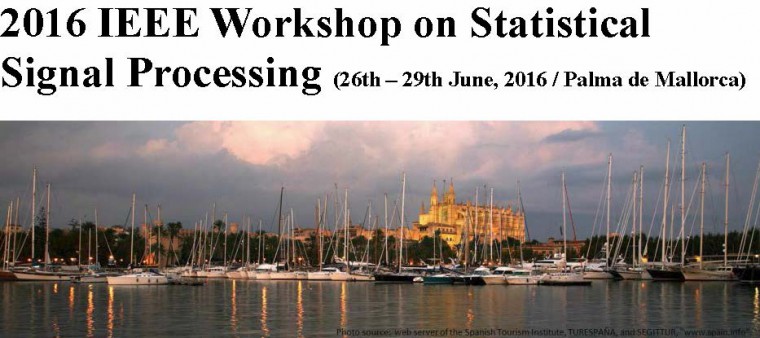2 papers accepted at SSP 2016

2 papers co-authored by GTAS members have been accepted for presentation at the
2016 IEEE Workshop on Statistical Signal Processing (SSP), to be held in Palma de Mallorca, 26th-29th June 2016.
- I. Santamaria, L. Scharf, C. Peterson, M. Kirby and J. M. Francos, "An order fitting rule for optimal subspace averaging"
Abstract: The problem of estimating a low-dimensional subspace from a collection of experimentally measured subspaces arises in many applications of statistical signal processing. In this paper we address this problem, and give a solution for the average subspace that minimizes an extrinsic mean-squared error, defined by the squared Frobenius norm between projection matrices. The solution automatically returns the dimension of the optimal average subspace, which is the novel result of the paper. The proposed order fitting rule is based on thresholding the eigenvalues of the average projection matrix, and thus it is free of penalty terms or other tuning parameters commonly used by other rank estimation techniques. Several numerical examples demonstrate the usefulness and applicability of the proposed criterion, showing how the dimension of the average subspace captures the variability of the measured subspaces.
- J. Via and I. Santamaria, "Balanced least squares: estimation in linear systems with noisy inputs and multiple outputs"
Abstract: This paper revisits the linear model with noisy inputs, in which the performance of the total least squares (TLS) method is far from acceptable. Under the assumption of Gaussian noises, the maximum likelihood (ML) estimation of the system response is reformulated as a general balanced least squares (BLS) problem. Unlike TLS, which minimizes the trace of the product between the empirical and inverse theoretical covariance matrices, BLS promotes solutions with similar values of both the empirical and theoretical error covariance matrices. The general BLS problem is reformulated as a semidefinite program with a rank constraint, which can be relaxed in order to obtain polynomial time algorithms. Moreover, we provide new theoretical results regarding the scenarios in which the relaxation is tight, as well as additional insights on the performance and interpretation of BLS. Finally, some simulation results illustrate the satisfactory performance of the proposed method.

